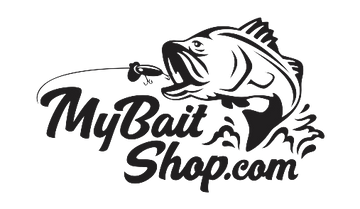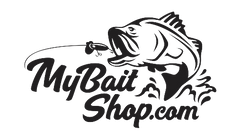Heddon: Understanding the Number System
Heddon: Understanding the Number System


The art of matching a lure to a box can be a challenge as it requires at a very minimum a understanding of how lure makers marked the boxes and what all those numbers and/or letters on the boxes mean. The purpose of this edition of Lure Lore is to give you a basic understanding how these numbering systems work. Since Heddon probably had the most complicated and extensive system, I'm going to use theirs to illustrate. Keep in mind, however, that over the period of 50 to 100 years, many companies changed how the way they did this and it will take a bit more effort on your part to become more knowledgeable in this area such as purchasing books, copying and reading papers that come in lure boxes, obtaining lure catalogs and of course talking with other collectors.
As a general rule, lure makers identified each lure with a number, often referred to as a series number or model number. These numbers not only acted as a identifier for the lure but often was also an indicator of a lure's color as well. In addition, some used letters either in front of the number (prefixes) or in back of the number (suffixes) to note additional features of the lure and color.
The Creek Chub Bait Co. primarily used a single number to identify a lure and it's color. As an example, the well-known Pikie was assigned the number 700. If the color of the Pikie was Perch Scale, the number on the box was then 701; the number '01' was indicative of the Perch Scale color. A White Head & Black Pikie was number 711. Similarly, Creek Chub's Dingbat lure, #5100, in Perch Scale would be 5101 and one in White Head & Black would be 5111.
The Heddon Company started out with a similar approach in the early 1900's using numbers to identify a lure and it's color. As an example, the early Heddon Minnow was assigned the series number 100. It came in a number of colors but each color was assigned it's own number. Thus, if the lure was in the color Rainbow (1), the number was 101; solid white (2) was numbered 102 and so on.
Around 1915, Heddon changed it's numbering scheme to include suffix letters to indicate colors though some numbers were still used for color codes. Moreover, as time passed, Heddon also utilized letters as prefixes to their numbering scheme to indicate special features of the lure as well as suffixes, both of which will be explained a bit later.

#1: If the code on the box is just a number (no suffix letters) then the code indicates both the series number and the color. As an example, the 1922 Heddon catalog lists the following codes for the Dowagiac Minnow, the 100 series:
100 Fancy Green Back (0 is the color code; 100 is the series number)
101 Rainbow (1 is the color code)
102 White body with red eyes (2 is the color code)
104 Red body with dark blended back (4 is the color code)
For the vast majority of Heddon color codes, the number 0 thru 8 were primarily used to indicate colors. Over the history of Heddon, however, the color and/or description of the color for each of these numbers was not uniform. Thus, if you have a box for a 100 Minnow marked "100" then the color was 'Fancy Green Back' (often called Green Crackleback) but if it was for a Heddon-Stanley Weedless Pork-Rind Lure box marked "70", the color was "All White".
The use of a single number to indicate both series number and color was used by Heddon until 1946 when Heddon changed their bait numbering scheme. This too will be discussed later in this article.
#2: If the code on the box is a number ending in '9', the letters following it are indicative of the color or finish for that lure. This applies to the vast majority of Heddon codes with a few exceptions that will be noted later. In the same 1922 catalog, the Dowagiac Minnow series #100 also has the following codes illustrating the use of these letters:
109A Yellow Perch
109B Frog colors
109D Green scale finish
109P Shiner Scale
#3: If the code on the box is a number ending in '0' (zero) AND there are letters following it, the letters are indicative of the color or finish for that lure. This applies to Heddon codes used from 1946 to date and in a few instances, some lures produced before 1946.
In 1946, Heddon changed their bait numbering system. Their announcement of this change began with, "...In the past some confusion has been experienced due to the numbering systems of Heddon..." Based on my limited time in the hobby, this was a classic understatement!
The change came in dropping the use of numbers at the end of the series number to indicate colors as well as dropping the '9' at the end of the series number when letters were used. For the purpose of consistency, all Heddon numbers ended in '0' and letters were used to indicate colors. This change affected almost all of the Heddon number prior to 1946 but primarily affect the '0' thru '8' color numbers. Below is a picture of a Heddon chart from their announcement showing how the codes were changed.

1948 Heddon Catalog Series Conversion Chart
You will note from the chart that colors such as Rainbow which was previously denoted as '1' now was 'RB'. In instances where the color was previously indicated by letters such as 'XRY', the '9' was dropped and instead the complete series number was used with a '0' at the end and then the letters 'XRY'. This is a very important fact to know since it is a way to date the lure and box as either pre-WWII or post-WWII for the vast majority of Heddon lures.
In summary, by following these three 'rules', you should be able to identify 95% of most of the Heddon lure boxes you come across.
There are some exceptions to the 'suffix' codes as they pertain to being used to identify color. On occasion, Heddon used a letter or letters as suffixes to indicate certain features of the lure. Some examples include the following:
DH - Indicated double hooks on lures that came standard with treble hooks.
H - Indicated treble hooks on lures that came standard with treble hooks.
SH - Indicated single hooks on lures that came standard with treble hooks.
I or 1 - Indicated a research lure.
In addition, some series numbers had a letter suffix in them to begin with. Some examples of this include:
10B - Salt Water Minnow Florida Special (2-3/4")(c. 1922)
10S - Salt Water Minnow Florida Special (3-1/2")(c. 1922)
431F - Sonar Flash (c. 1968)
482F - Flurorescent Toni Spinner (c. 1972)
9255R - Rattlin' Zara Spook (c. 1989)
As you can see, the 'B' and 'S' in the first two was used to differentiate between the two though the logic of using those two letters escapes me. To indicate color, Heddon used both numbers and letters (remember, this is pre-WWII!). So a 10B in Plain White became "12B", and one in Yellow Perch was '19BL'.
In the latter three examples, there is more logic to the letters used as they relate to a feature of the lure as in the case of the 'Rattlin Zara Spook (9255R) which rattled. This lure in Silver Shore Minnow color would have been 9255R-XRS. In the instance of the other two, the Sonar has a special 'flash' finish and the Toni Spinner, a 'fluorescent' finish.
By now you're probably wondering about the 'Mysterious Heddon "W"' that I referred to in the title so the final piece of the puzzle, the 'prefixes' to Heddon numbers needs to be discussed.
Heddon used a wide variety of 'prefixes' to their codes to indicate all sorts of things about the lure and it's finish. In most instances, there is some logic to the choice of letters but in others, it's a guess at best. Some common examples of the use of prefixes are:
D - Indicated the 'Go-Deeper' model, particularly with River Runt Spooks, i.e., D9119XRY.
DD - Indicated the 'Deep-Dive' model, particularly with River Runt Spooks, i.e, DD9400RH.
N - Used to indicate 'No-Snag' for River Runt Spooks, i.e., N9119XBW.
S - Used to indicate a single hook for the Sam-Spoon metal bait, i.e., S2160.
T - Used to indicate a treble hook for the Sam-Spoon metal bait, i.e., T2160.
W - Used to indicate a wood lure for the re-issued Lucky 13 lure, i.e., W2500L.
Some other prefix letters used include 'B' as used with the wood Midgit Digit River Runt Spook (B110 series)(probably stood for 'baby'), J for Junior, S for Squirrel Tail, B for Bucktail, S for Saltwater, and F for fur finish.

1937 Heddon Catalog Nite-N-Day Ad
Finally, the mysterious letter 'W' appeared in Heddon's 1936 and 1937 catalogs as shown above. Under a section titled "Nite-n-day Baits (Luminous Paint-White with Red Decorations)" is a listing of various lures painted with Heddon's special luminous paint. The mysterious 'W' appears for only one lure, the Heddon River Runt Spook (sinker model), as "W9119 Lum".
I have in my collection a Floater River Runt Spook in luminous paint with red & white decorations which is Heddon #9402 Lum in it's correct box. (Click HERE to view this lure). I also had a box marked "W9119XPLB" a sinker in Blue Pearl Shore Minnow color pattern. (Click HERE to see this). But what did the 'W' stand for? Obviously, "Luminous" doesn't have a "W" in it! My best guess is that it stands for 'white'. Every box I've seen with the "W" has another color code at the end, i.e., W9119D (Green Scale), and W9119P (Shiner Scale). Couple this with the illustrations on Larry Nicholson's River Runt Color Guides for these two colors which shows the bellies as being solid white, it is indicative that the belly paint is luminous but the rest of the body is the primary color. Of course, if you have a better explanation, I'm open to suggestion!
In conclusion, the Heddon code system for identifying their lures is indeed a challenge to the collector. There exist any number of different names to the same color code, even within the same catalog year. Moreover, even series numbers were re-used but for different lures to complicate the matter. To that end, I've maintained the Heddon Colors Identification Page which contains a substantial list of Heddon color codes and pictures of lures in each color when available. I've also added a comprehensive list of Heddon's series numbers for their lures and I believe it is the most complete list currently available. See my Heddon Lure Series Numbers web page to see this list. In each case, however, I'm certain there are mistakes and/or omissions so I would encourage readers to let me know if you find them!

If you have any further information on any of the items displayed on this page which you'd like to share, please send your comments to me and I'll update the page accordingly. Contributions of interesting items and/or unknowns are encouraged.
© 2020, My Bait Shop, LLC


